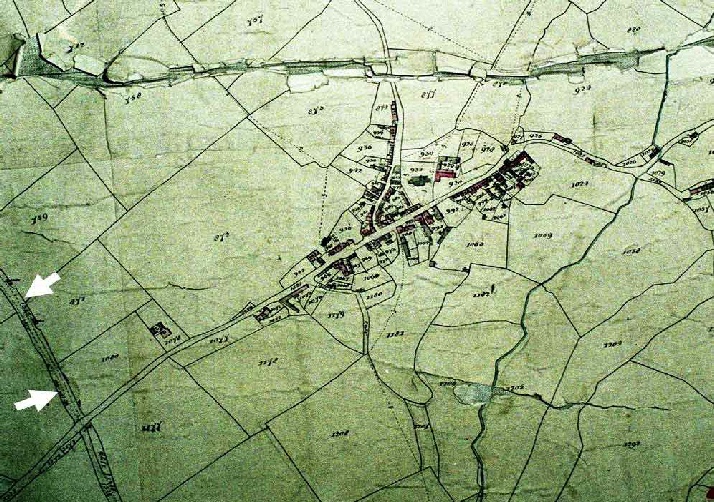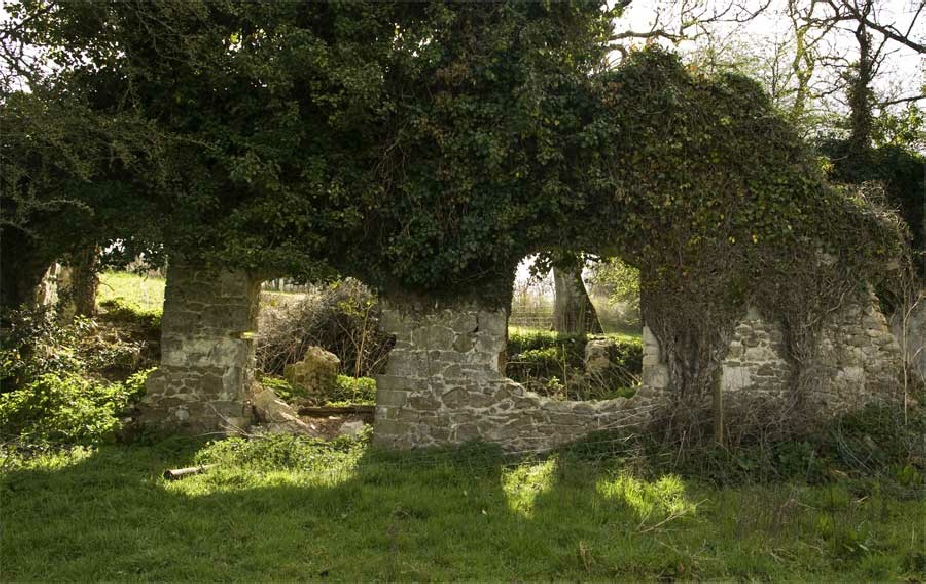THORNCOMBE’S FLAX & HEMP INDUSTRIES
Tucked away in the Synderford Valley lies the ruin of Chaffeigh Mill. It is at least
175 years old. Set in a stunning location, what is left of the building is gradually
disintegrating but underneath the ivy you can still make out some of its walls.
With the help of historic maps it is still possible to spot remnants of leats
in the undergrowth. Leats, interconnected waterways, were dammed up when it rained.
The buildup of water was then released to run the water wheels at Chaffeigh and Shedrick
Mills. See Thorncombe's Industrial Relics Chaffeigh is about 15 minutes walk from
Blind Land opposite Gribb View, across three fields following a footpath along which
mill workers made their way to work. The picturesque route continues towards Winsham
along the banks of the Synderford River to Shedrick. See Walk 3. There are local
stories of linen being woven at Chaffeigh. Flax from which linen is woven was indeed
grown in Thorncombe for processing by local weaving mills at the end of the late
18th and early 19th century. But so far no hard evidence has been found to confirm
whether Chaffeigh or other mills elsewhere in Thorncombe were ever used for either
spinning flax or weaving linen. It is more likely that locally grown flax was sent
to Crewkerne or Bridport for processing. During this period, both towns had mills
where sails were woven for the navy.
Flax
Records covering the period 1782-1798 include details of one Winsham parishioner
and seven Thorncombe parishioners growing flax around Thorncombe and Winsham,
and at Wagg’s Plot, Crewkerne, Chillington, Chard, Chardstock and Stoke Abbot. See
Hemp & Flax Bounties (Thorncombe) 1781-1798 Thorncombe Overseers of the Poor Accounts
record that in 1804, Samuel Phillips who rented a flax plot from Mr Wyatt at Chardstock
between 1791 and 1793, agreed to take on parish pauper William Mitchell as an apprentice
dresser for 5s 3d per week for one year.
Two flax shops in Horseshoe Road near Thorncombe Thorn crossroads marked on the 1839
Tithe Map, had disappeared by the time the 1889 OS map was published. Several flax
dressers, swinglers (beaters), factory workers and a flax merchant are variously
listed as living and working in Thorncombe parish in the 1841, 1851, 1861 and 1871
censuses.

Extracted from the 1839 Thorncombe Tithe Map. Arrows show location of two flax
shops on Horseshoe Road. The one nearest the cross roads at Thorncombe Thorn, was
owned by Thomas Langford, and is roughly next to the allotment. The other owned
by Thomas Stroud, was opposite the entrance to the Sports Club. Reproduced courtesy
of Richard Holt and Dorset History Centre.
Hemp
Field names recorded in the 1840 Tithe Apportionment and addresses in the 1841 and
1851 census suggest that hemp, used for making rope and nets, was grown on land
around Saddle Street and Yew Tree Farm at one time. A plot called Hempland is included
in 19th century deeds for the house in Chard Street of the same name. But there
is no mention of hemp being grown in Thorncombe in the 18th century bounty records.
© EVE HIGGS, April 2015





